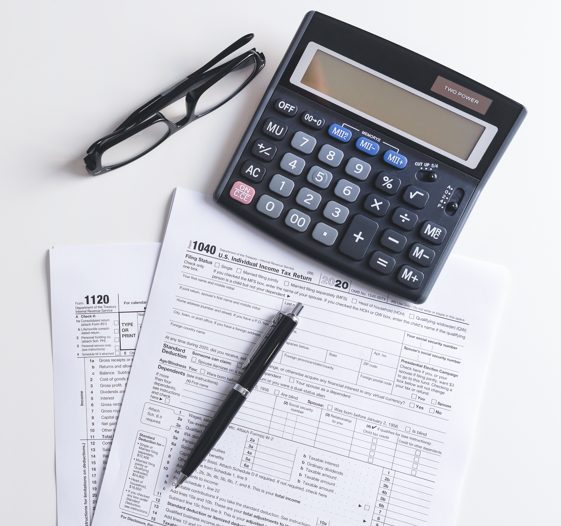At a time of heightened personal and economic uncertainty due to the COVID-19 pandemic, super fund members are encouraged to scrutinise their Annual Super Statement.
Super remains the bedrock of saving for retirement for most Australians and your Annual Super Statement contains a wealth of information.
No doubt your Annual Super Statement will be one of many statements or bills you receive, but it is worth the effort to take a closer look at your Statement. After all, super is now the second highest form of savings for Australia, exceeded only by housing.
If everything is in order, you’ll get increased peace of mind about your nest egg. Conversely, a quick check may reveal some opportunities to improve your position, and the sooner you take advantage of them, the quicker your savings may increase or better meet your needs.

What to look for on your super statement
The layouts of statements vary between super funds, but there is minimum information required by law to be included. Some information appears in summary form, with a detailed breakdown shown elsewhere in the Statement.
Here are some key actions to consider taking:
1. Compare your investment balance
Compare your investment balance at the end of 2019/20 to your investment balance at the end of the preceding financial year. This will show you how much your investments have changed over the year.
Due to COVID-19 and impacts to the investment markets worldwide, investment returns were lower in 2019/20 and as a result any increase in 2019/20 of your super balance is more likely to be lower than that of previous years. By way of example, according to SuperRatings (an independent super research and rating advisory business) the median return for a ‘balanced’ investment option for the one year ended 30 June 2020 was -0.8%.
Super exists to provide savings for retirement. One of the easiest ways to assess whether you’re on track to be comfortable in retirement, is to use your super fund’s tools and calculators. legalsuper’s Retirement Income Forecast calculator is an excellent starting point as it helps you project your possible retirement income and explore options for improvements.
To help determine whether your retirement income target will set you up for the lifestyle in retirement you envisage for yourself and your loved ones, it is helpful to compare your retirement income target to the Association of Superannuation Funds of Australia (ASFA) Retirement Standard. The Standard benchmarks the annual budget needed by Australians to fund either a “comfortable” or “modest” standard of living in the post-work years of those aged around 65 and those aged around 85.
The latest Standard, issued for the June quarter 2020, states that in retirement, a single person aged around 65 will need $27,902 per annum to lead a “modest” lifestyle and $43,687 per annum to lead a “comfortable” lifestyle. Couples aged around 65 years will need $40,380 per annum and $61,909 per annum respectively. (These figures assume the retiree/s own their home outright and are relatively healthy).
2. Check where you’re invested
Your Annual Super Statement must show your investment choice. It’s important to periodically assess the level of risk and return you’re comfortable with and ensure your investment choice is aligned.
legalsuper offers 13 investment options, including the ability to self-manage your super with our Direct Investment option. This SMSF-style alternative offers the flexibility of real time trading, for those who want to be more hands on with their investments.
As a result of the economic impact of the COVID-19 pandemic, super funds have, understandably, received an increase in inquiries from members about the impacts to their super, including whether they should change their current investment option(s).
legalsuper’s members are to be assured that the fund’s highly experienced investment experts continue to actively monitor and respond to changing market conditions.
Also, history tells us that economic downturns are temporary, as markets have demonstrated the ability to recover losses after a crisis. For example, despite share markets falling more than 40 per cent during the Global Financial Crisis of 2008, most balanced funds recovered the majority of losses in the following 12 months.
That said, there may be an opportunity to change your investment option(s) to better suit your current and future needs and the best way to start this conversation is to call your super fund to discuss the options available.
3. Assess your insurance
Your Annual Super Statement must set out what insurance you had at the end of the financial year, and how much it costs.
You should check that the type and level of cover remains adequate given your circumstances, objectives and needs. Important items to check are whether you are paying for insurance cover you don’t need or whether you are inadequately insured.
4. Review your transactions
Your Annual Super Statement lists the transactions applied to your account throughout the year. This will include any money received (employer and personal contributions, government contributions and rebates, plus any rollovers), investment earnings derived or losses incurred, and any money paid out (most commonly administration and investment fees, insurance premiums, any withdrawals and taxes).
If you’re employed, you should receive an income statement via myGov or a payment summary from your employer for each financial year. You can use this to reconcile contributions your employer or you paid during the year against the amounts reflected in your Annual Super Statement, thereby checking if your employer has paid the right amount of super for you.
5. Check your fees against investment performance
Most commonly, super fund fees comprise of administration and investment management fees. These may differ depending on your account balance and investment option(s) chosen and the kind of service the fund offers. It is to be remembered that high fees don’t always mean high investment returns and vice versa. It’s best to assess the two together and check if yours are competitive with other super funds.
6. Other things to check
- Have you provided your TFN? If not, you will be charged extra tax.
- Are your contact details up to date? If not, your fund may be unable to contact you.
- Have you received more than one statement? More than one statement means more than one set of fees. Consider whether consolidating accounts will benefit you — but make sure you consider insurance coverage before consolidating super accounts.
- Do you have a beneficiary? If you were to pass away, where would you want your super to be paid?
Reach out for help
Super is one area in life where professional advice can really pay off. If you need help with understanding your Annual Super Statement, investment options, how to consolidate accounts, finding lost super, or ensuring you have the right insurance cover, reach out for help.
legalsuper offers members one-on-one meetings with our team of Client Service Managers. Our dedicated team, or your personal financial planner can help you optimise your super strategy to stay on track for a great life in retirement.
If you would like to meet with a member of our team of Client Service Managers for more in-depth support about your super, contact us and request a complimentary appointment. Call 1800 060 312 Monday to Friday between 8am to 8pm (AEST) or via email to mail@legalsuper.com.au.
This information is of a general nature only and does not take into account your objectives, financial situation or needs. You should therefore consider the appropriateness of the information and obtain and read the relevant legalsuper Product Disclosure Statement before making any decision. Past performance is not a guide to future performance. Legal Super Pty Ltd ABN 37 004 455 789, AFSL 246315 is the Trustee of legalsuper ABN 60 346 078 879.


